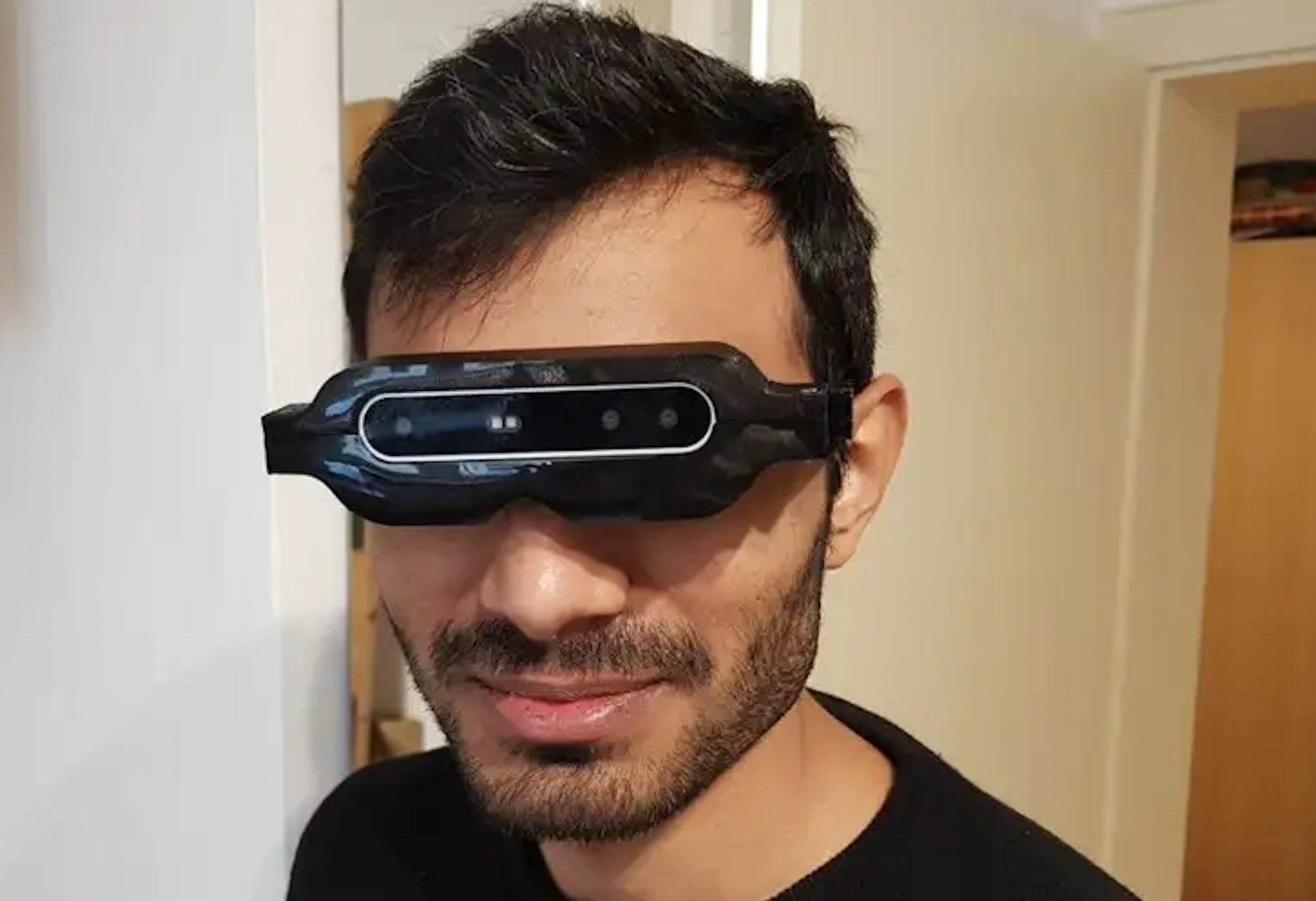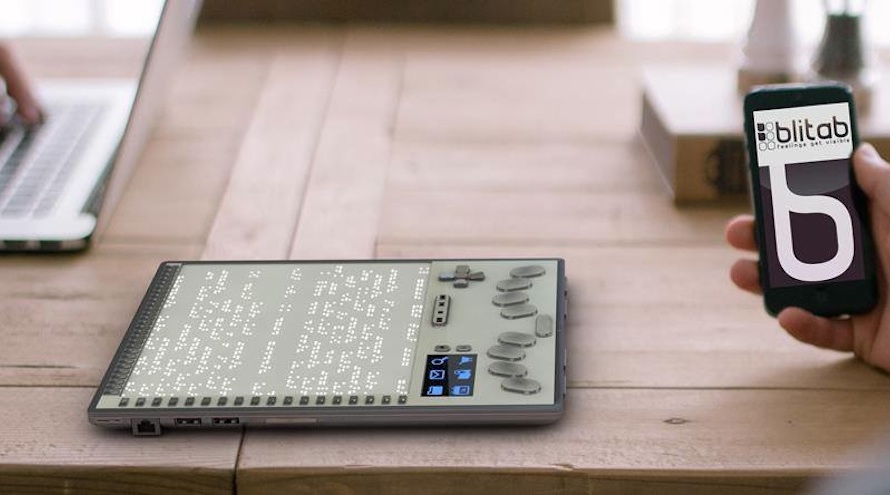OCR Devices for the Blind: Turning Text into Speech with Ease
Empowering Freedom With Assistive Modern Technology for the Blind
The integration of assistive modern technology right into the lives of people with visual disabilities represents a significant advancement in advertising freedom and self-sufficiency. From cutting-edge display readers to innovative smart walking canes, these devices not only enhance day-to-day navigating and interaction however also equip customers to engage meaningfully in various facets of life. As we explore the myriad advantages and real-world applications of these technologies, it ends up being vital to take a look at the hidden elements that contribute to their effectiveness and the possibility for future developments in this essential area.
Introduction of Assistive Technology

The development of assistive innovation is grounded in principles of inclusivity and empowerment. Technologies in software, equipment, and sensory enhancements provide users with alternatives customized to their details requirements. From display viewers that transform text to speech, to responsive tools that communicate info with touch, these tools change the means individuals involve with their surroundings.
In addition to practical applications, assistive modern technology promotes higher social inclusion and engagement in various markets, consisting of education and learning and work (Wearable technology for low vision). As r & d proceed to progress, the possibility for assistive technology to additionally enhance the lives of aesthetically impaired individuals stays promising, leading the way for a more fair culture where everyone can grow
Kinds Of Assistive Tools
A selection of assistive tools have actually emerged to support individuals with visual impairments, each created to meet particular requirements and improve everyday performance. These tools vary from low-tech solutions to state-of-the-art innovations, offering varied choices for individuals.
Low-tech devices include magnifiers and large-print materials that aid in reading and writing. Braille tools, such as Braille slates and stylus pens, allow tactile analysis and interaction. Orientation and wheelchair help, like white canes, assist individuals navigate their environment securely.
On the higher end of the spectrum, electronic magnification systems and screen readers use considerable support. Electronic magnifiers permit users to expand text and images on displays, while display readers transform digital material into manufactured speech, promoting accessibility to info on computers and smartphones.
Smartphone applications additionally play a critical role, giving attributes like text acknowledgment and navigating aid. Wearable modern technology, such as clever glasses furnished with augmented reality, is becoming a promising device to enhance situational understanding.
Benefits of Assistive Technology
The assimilation of assistive innovation substantially enhances the top quality of life for people with visual problems. These modern technologies encourage individuals by advertising self-reliance, allowing them to browse their atmospheres better and carry out day-to-day tasks with greater convenience. For instance, display readers and zoom software permit individuals to access electronic information, cultivating professional and instructional opportunities that may have previously been out of reach.
Moreover, assistive devices such as smart walking sticks and general practitioners applications provide real-time navigating assistance, improving flexibility and safety. This boosted freedom not only improves self-esteem however likewise encourages social engagement, enabling individuals to take part even more fully in their communities.
Assistive innovation likewise promotes communication, helping users get in touch with others through voice recognition and text-to-speech applications. This ability is crucial for preserving connections and accessing essential details.
In addition, the modification choices offered with numerous assistive technologies ensure that customers can customize tools to their details demands, even more boosting use and efficiency. Generally, the benefits of assistive modern technology for individuals with aesthetic problems are extensive, promoting a much more comprehensive a fantastic read culture where everyone can pursue their objectives and desires.
Case Researches and Success Stories
Highlighting the transformative influence of assistive technology, many case research studies highlight how people with aesthetic impairments have actually efficiently integrated these devices right into their day-to-days live. One compelling instance involves an university student who used screen reading software program to browse online resources and academic materials effectively. This modern technology not just promoted her education but additionally boosted her self-confidence in taking part in discussions and team tasks.
Another case study includes a specialist that uses a smartphone application designed for navigating and object recognition. By utilizing this app, he has reclaimed freedom in both his personal and workplace, permitting him to commute individually and involve with colleagues more properly.
In addition, a senior citizen shared her experience with braille e-readers, which allowed her to access a substantial selection of literary works and remain gotten in touch click now with her area with book clubs.
These success tales highlight the critical duty of assistive modern technology in fostering self-reliance, improving quality of life, and promoting social integration for individuals with visual impairments (AI-powered visual aids). By accepting these innovative devices, users can conquer challenges and confiscate possibilities that add to their specialist and personal satisfaction

Future Fads in Assistive Technology
Advancement in assistive innovation is positioned to redefine the landscape of support for people with aesthetic problems. Arising fads highlight the assimilation of artificial intelligence (AI) and artificial intelligence, which enhance the performance of gadgets that aid with navigation and information access. AI-driven applications are currently capable of interpreting aesthetic data in real-time, allowing users to involve with their atmosphere much more individually.
Additionally, the growth of wearable innovation is progressing rapidly. Smart glasses outfitted with augmented truth (AR) can provide audio descriptions of surroundings, changing how individuals interact with public rooms. These devices not just promote autonomy but additionally foster social inclusion.
Additionally, the Net of Things (IoT) is making homes smarter, permitting seamless connection in between assistive gadgets and day-to-day home view appliances. This connection encourages individuals by enabling voice-activated controls and automatic feedbacks tailored to specific demands.
Conclusion
In final thought, assistive modern technology plays a critical duty in encouraging individuals with visual disabilities by enhancing their independence and involvement with their environments. The varied series of applications and tools readily available not just facilitates navigation and communication however additionally advertises social assimilation and possibilities for professional and personal development. As improvements continue in this field, the possibility for enhancing the high quality of life for those with aesthetic problems will expand, fostering greater freedom and empowerment.
